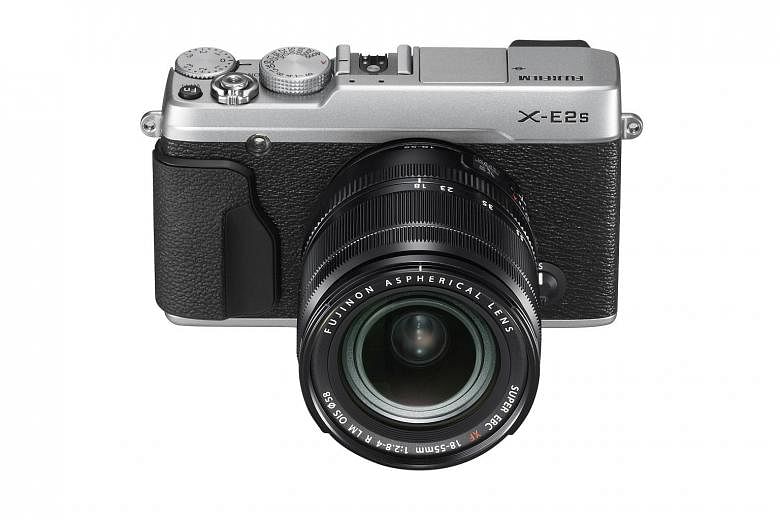The Fujifilm X-E2s' debut went largely unnoticed, as it was launched together with the flagship rangefinder-type mirrorless camera X-Pro2.
The X-E2s sits between the X-Pro2 and the budget X-A2. This camera has a smaller non-weather-resistant body and an electronic-only viewfinder, instead of the X-Pro2's weather-sealed magnesium-alloy body and hybrid optical/electronic viewfinder.
As suggested by the "s" suffix, the X-E2s is basically an incremental upgrade over its predecessor - the X-E2.
The X-E2s features a better autofocusing (AF) system of 77 AF points (up from 49), faster focusing speeds of up to 0.06sec, a new electronic shutter and a top shutter speed of 1/32,000sec.
But it retains its predecessor's 16-megapixel X-Trans II image sensor, whereas the X-Pro2 is using the new 24.3-megapixel X-Trans III image sensor.
Like all Fujifilm X-Trans image sensors, it differs from conventional sensors in that its red/green/ blue photo sensors are arranged in an irregular pattern that mimics the randomness of 35mm film. Such an arrangement reduces the moire effect - an effect in which closely spaced straight lines come across with a wavy pattern distortion.
-
TECH SPECS
PRICE: $1,699 (with XF 18-55mm kit lens)
IMAGE SENSOR: 16.3-megapixel APS-C X-Trans CMOS II
DISPLAY: 3-inch LCD with 1,040,000 dots; Oled electronic viewfinder with 2,360,000 dots
SHOOTING SPEED: Up to 7 frames per second
SENSITIVITY: ISO 100 to 51,200
CONNECTIVITY: Wi-Fi
WEIGHT: 350g (body only, with battery and memory card)
-
RATING
DESIGN: 4/5
FEATURES: 3/5
PERFORMANCE: 4/5
VALUE FOR MONEY: 4/5
BATTERY LIFE: 3/5
OVERALL: 4/5
Build-wise, the X-E2s does not feel as solid and sturdy as the X-Pro2. However, the X-E2s has a slightly improved grip with a rubber area that allows my middle and ring fingers to grasp it better.
Button layout follows the vintage rangefinder style, with the milled dials of shutter speed and exposure value compensation on its top right. This allows you to quickly change these settings.
To change aperture, turn the barrel ring on Fujifilm's XF lenses. For this review, I used the XF18-135mm f/3.5-5.6 lens.
If you find this old method of changing shutter speed and aperture too cumbersome, you can turn the shutter speed dial to A and flip a switch on the lens to A for a full automatic exposure mode.
Operation is fast. It takes about 1sec to power up or shut down, twice as fast as other mirrorless cameras. Shutter lag is minimal.
Using an SD card with a writing speed of 30MB per second, the X-E2s was able to capture 7 RAW images in 0.9sec before its buffer ran out.
AF is immediate in bright sunlight. In dim lighting, it takes a second at most to grab a focus with the aid of the AF assist light, when the competition might take up to 2sec. But this performance is similar to its predecessor's.
Picture quality is great for its class. I got sharp images with a great dynamic range that allows details to show in the darker areas. Auto white balance is accurate in most lighting conditions.
The ISO performance is equally good. You will not see image noise even at ISO 1,600. Only at ISO 3,200 do noise artefacts appear, but the image still looks good enough for print. I do not recommend anything beyond ISO 6,400, as the chromatic noise becomes readily visible.
Battery life is average for a mirrorless camera. It manages about 350 still images on a full charge.
•Verdict: For the budget-conscious who still want a quality rangefinder- style mirrorless camera, the Fujifilm X-E2s might just fit the bill.


